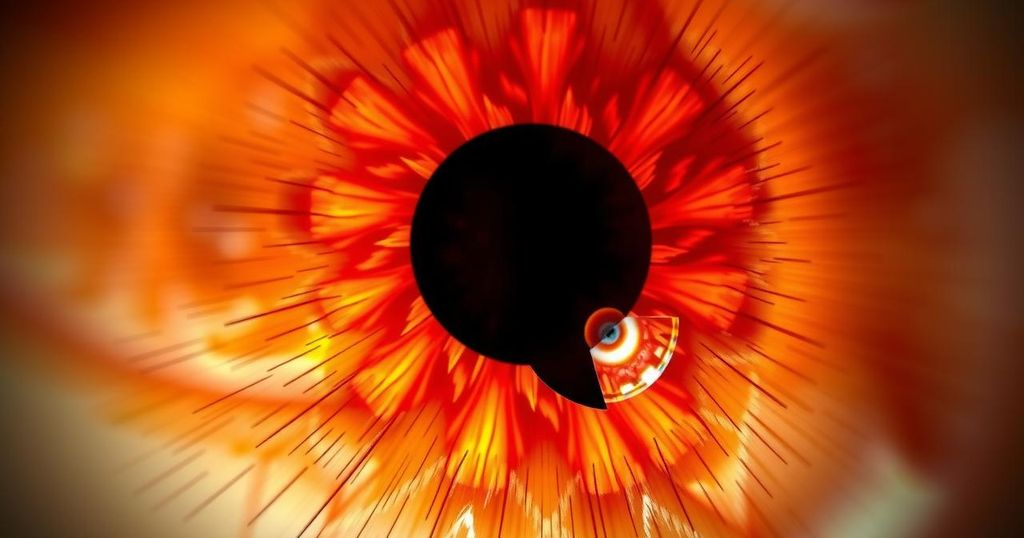Artificial Intelligence Enhances Detection of Neuro-Ophthalmic Disorders
A new deep learning system has been developed that can distinguish between idiopathic intracranial hypertension (IIH), nonarteritic anterior ischemic optic neuropathy (NAION), and healthy eyes from a single fundus image. With an accuracy of 93.6%, this tool is particularly beneficial in settings lacking specialist neuro-ophthalmologists. It could help avoid unnecessary procedures, thus bridging critical gaps in diagnosis and care for patients with optic disc swelling.
In a groundbreaking development, researchers have introduced an advanced deep learning (DL) system designed to accurately identify various neuro-ophthalmic disorders from a single fundus image. This model, which can distinguish between idiopathic intracranial hypertension (IIH), nonarteritic anterior ischemic optic neuropathy (NAION), and healthy eyes, boasts an impressive externally validated accuracy of 93.6%. Such technology could prove critical in emergency departments and resource-limited settings where specialist expertise is often lacking.
The utility of this model lies in its simplicity—it requires only one fundus image to make its distinctions. This distinction is crucial as it could help health care providers avoid invasive procedures like lumbar punctures or expensive diagnostic imaging. Traditionally, diagnosing NAION is challenging since there hasn’t been a definitive test, and it often hinges on clinical assessments. This new tool provides an efficient way to accurately recognize IIH, NAION, or regular healthy eyes, filling a significant gap in necessary and timely neuro-ophthalmic diagnoses.
Both IIH and NAION can present similar characteristics, especially optic disc swelling, which might blur the boundaries and result in potential vision loss. The underlying causes, however, vary significantly. IIH is associated with increased intracranial pressure without structural reasons and is typically seen in younger women with obesity, whereas NAION leads to sudden, painless vision loss and typically affects older adults. Neuro-ophthalmologists usually can differentiate these conditions, but their subtlety often confounds nonspecialists.
Deep learning continues to revolutionize the field of ophthalmology, being effectively applied to recognize conditions like diabetic retinopathy and glaucoma. Following these previous successes, the researchers trained their model with over 15,000 fundus photographs, representing the three conditions. They utilized images from clinical trials and clinics, ensuring the data was diverse enough to create a robust model.
The system was built upon a ResNet-50 architecture and underwent rigorous training. They selectively included images that provided clear and centered views of the optic disc, helping the model focus solely on relevant features. Remarkably, the internal validation yielded an outstanding accuracy of 96.2%, and the external validation confirmed its effectiveness at 93.6%.
An interesting facet of the research involved using heat maps to highlight parts of the images that most influenced the model’s diagnostic decisions. For instance, in identifying IIH, the system often highlighted the inferior portion of the optic disc, in line with previous studies noting thickening in this area. NAION images showed emphasis on the superior region, correlating with visual deficits seen in the condition.
This DL tool is designed to assist clinicians in underserved environments who may struggle with interpreting fundus photographs. By what it displays, the system can quickly indicate whether optic disc swelling may suggest papilledema, is normal, or hints at NAION, aiding to cut down on unnecessary referrals or tests.
Although the model performs admirably, the authors stress that it should not replace clinical judgment. A single image may miss various pathologies, and thus combining the findings with other assessments remains crucial for comprehensive patient care.
In conclusion, this DL system represents a promising advancement for differentiating optic disc swellings in neuro-ophthalmic conditions using just a fundus photograph. The accuracy and reliability showcased across multiple datasets indicate it could be an invaluable support tool in a range of clinical settings, particularly where specialized eye care is minimal. Looking ahead, researchers are optimistic about refining this model further, hoping to bolster timely diagnosis and improve overall patient outcomes in healthcare.
The introduction of a deep learning system capable of diagnosing neuro-ophthalmic disorders using a single fundus photograph marks a significant enhancement in medical technology. Focusing on conditions like IIH and NAION, the system boasts a 93.6% accuracy rate, providing valuable support in various clinical settings, especially emergency departments with limited resources. As this technology evolves, it holds the potential to greatly improve patient care through timely and accurate diagnoses.
Original Source: www.ophthalmologytimes.com




Post Comment